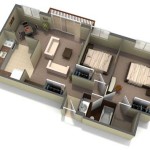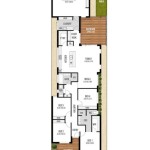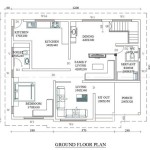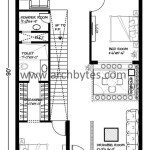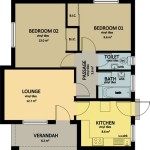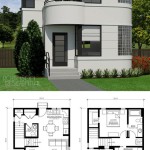Foundation Plan of a House: Essential Aspects
The foundation of a house is a vital component that ensures the structural integrity and stability of the building. Creating a comprehensive foundation plan is crucial for any construction project, as it sets the groundwork for the entire structure.
### Understanding the Soil ConditionsThe first step in designing a foundation plan is to assess the soil conditions at the building site. Factors like soil type, water table level, and load-bearing capacity need to be thoroughly evaluated. Different soil types require specific foundation designs, such as spread footings for stable soils or pile foundations for weak or waterlogged soils.
### Foundation Depth and WidthThe depth and width of the foundation are crucial considerations. The depth should be sufficient to reach stable soil layers and prevent frost heave in colder climates. The width is determined by the weight of the building and the soil bearing capacity. A proper foundation design ensures adequate support and stability for the structure.
### Foundation TypesThere are various types of foundations used in construction, each suitable for different soil conditions and building requirements. Common foundation types include:
- Spread footings: Shallow, wide footings used for small buildings on stable soils.
- Strip footings: Long, narrow footings used for walls or columns.
- Pile foundations: Deep piles driven into the ground, suitable for weak or waterlogged soils.
- Raft foundations: Continuous, reinforced concrete slabs that provide support for the entire building.
To enhance the strength and durability of the foundation, reinforcements like steel rebars or mesh are incorporated into the concrete. Reinforcements prevent cracking and increase the load-bearing capacity of the foundation.
### Drainage and WaterproofingProper drainage is essential to prevent water from accumulating around the foundation and compromising its stability. Drainage systems, such as French drains or sump pumps, divert water away from the building. Waterproofing measures like sealants or coatings are applied to the foundation exterior to prevent water penetration.
### Inspection and MaintenanceRegular inspections of the foundation are crucial to identify any signs of damage or deterioration. Timely maintenance, such as repairing cracks or sealing leaks, can extend the lifespan of the foundation and prevent costly repairs in the future.

Civil Engineering 12 24 11 Architectural House Plans How To Plan Floor Layout

Foundation Plans How To Choose The Right One Houseplans Blog Com

Foundation Plan And Layout Details Of Single Story House Dwg File How To Open Plans
Foundation Plan Of New Building Scientific Diagram

Foundation Plans How To Choose The Right One Houseplans Blog Com

Foundation Plan Of 25x15m Ground Floor Residential Building Is Given In This Autocad Drawing Model Now Cadbull

Foundation Plan Of 8x12m Residential House Is Given In This Autocad Drawing File Now Cadbull

Free Foundation Plan For 16 Wide Little House Project Small Cabin Plans Floor

The Typical Foundation Plan Of 4 And 8 Story Buildings Scientific Diagram

Foundation Layout

